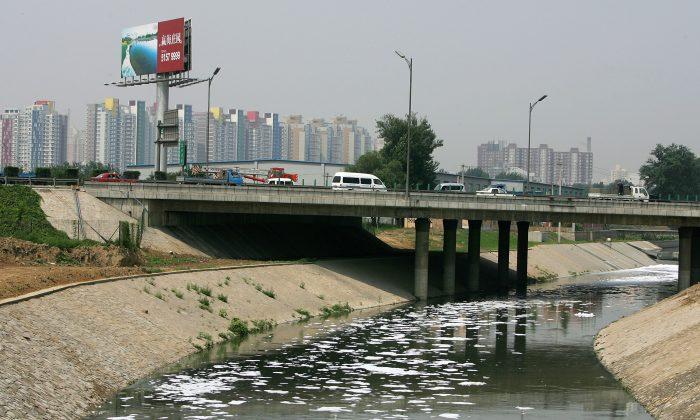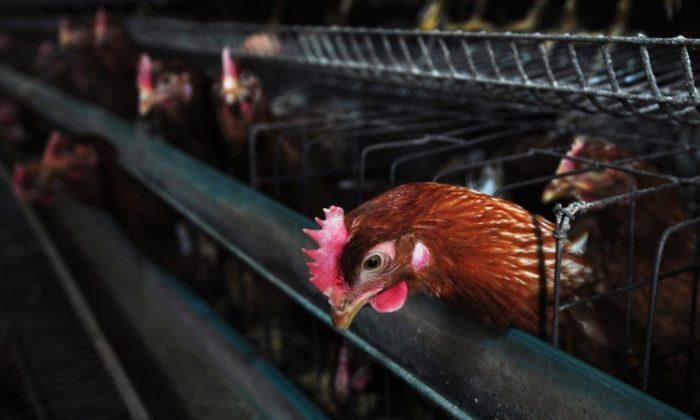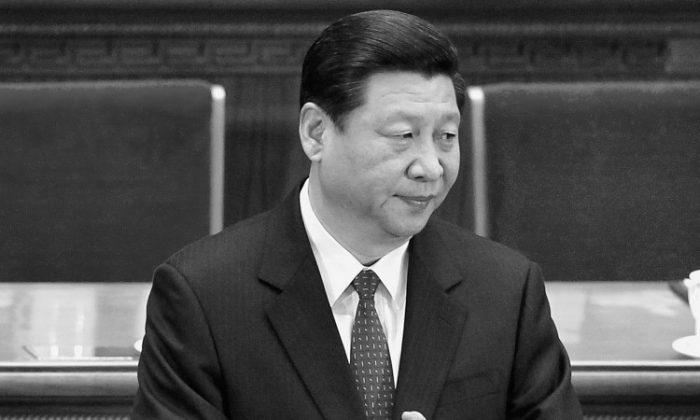In a village in Hebei Province—the province that surrounds China’s capital, Beijing—villagers have reported that their well water has been the color red for more than a decade and have suspected the unnatural color is due to the run-off from a local chemical factory. Several years of complaints to the authorities have produced no visible results, and the villagers have had no choice but to use bottled water for drinking.
Asked about the situation is Xiaozhuzhuang Village, Deng Lianjun, the director of the Bureau of Environmental Protection in Hebei Province’s Cangxian County, remarked that boiled red beans can change the color of water to red. According to Deng, the red color is not necessarily an indication of poor quality.
Locals then began calling Deng the “Red Bean Director,” and he recently stepped down amid criticism. With his departure, stories of local villagers suffering from cancer due to pollution began coming to light.
The Yanzhao Metropolis Daily, a Hebei Province newspaper, reported on April 7 that the test results of a well with red water at a chicken farm in Xiaozhuzhuang Village, showed that the content of aniline, a toxic chemical, exceeded the limit allowed in drinking water by 73 times.
On April 9, China News reported that since 1996 in the village of Xiaozhuzhuang, population 800, 24 people have died of cancer, with six villagers currently living with the disease.
Although villagers have made multiple complaints to the Central Government’s Ministry of Environmental Protection, the response has always been the same: “water test results are within normal parameters.”
“It happens in Anhui, Henan, Shandong, Shaanxi, and Shanxi [provinces],” long-time environmental and human rights activist, Hu Jia, told Sound of Hope (SOH) Radio.
“Sometimes there are multiple instances in one province. I have been to the front line, for example, in the areas surrounding the Huaihe River [a major river in east China],” Hu Jia said. “I have seen those people with esophageal cancer. There are ‘cancer villages.’ A small factory can poison an entire river, not to mention the pollution from various types of huge state-owned enterprises.”
According to the 2012 Annual Report released this January by the National Central Cancer Registry, the growth of cancer in China is alarming, with one person diagnosed every six minutes, and 8,550 people diagnosed every day.
The national cancer morbidity rate is high, with about 3.5 million new cases and about 2.5 million cancer deaths every year.
‘Cancer Villages’
In February, China’s Environmental Protection Ministry published its 12th Five-Year Plan for the Prevention and Control of Environmental Risks of Chemicals, which acknowledged the existence of what are called “cancer villages”—places with sky-high cancer rates linked to pollution from toxic chemicals.
A New Epoch Weekly article, appearing in 2011, “Cancer Villages Unknown to the Outside World” featured the first person account of Mdm. Tang Miwan of Malaysia, who had joined a medical team sent to help the villagers.
The article revealed the locations of 30 cancer villages in Henan Province in central China. No foreigners were allowed to visit those villages, barriers were deployed at the entrances of some, and those visiting were instructed not to ask questions or take photographs.
According to the article, chemical waste water was routinely dumped into local rivers, and those villagers who consumed the seriously polluted water were at high risk of being diagnosed with cancer. Nothing would grow on the infertile land near the rivers, and villagers could not cultivate any land irrigated with the contaminated water. One person’s fingers festered after she washed her hands with the water.
Development at All Costs
“Damage to the environment and ecosystem has been the cost of China’s development,” Gong Shengli, a Beijing-based internet news researcher, told SOH. “A 2007 World Bank report reveals that 750,000 people die in China each year from air pollution.
“Land pollution is much more serious than air pollution, so the result is even more alarming. Serious pollution affects 40 percent of the country’s water supply, and 55 percent of underground water in 200 cities is polluted. This means about 300 million Chinese have no access to clean water,” Gong said.
According to a China Business Journal article in 2008, Julong Chemical Factory polluted the nearby Dongjin Village in Jiangsu Province, resulting in the deaths of 100 villagers over a period of 5 years, 2001 to 2006, from esophageal and lung cancers.
An article in the Changjiang Times in 2006 reported the creek adjacent to Diwan Village in Hubei Province was heavily polluted, leading to the deaths of more than 100 villagers from cancer.
“The Chinese Communist Party’s officials at all levels think of nothing but personal interest and gain, even those officials at environmental agencies. The officials’ performance ratings have been closely tied to the growth rate of the Gross Domestic Product (GDP), so the officials are only concerned about tax revenues or the increasing growth rate of the GDP and give no regard to the rate of occupational disease or loss in food production,” Hu Jia told SOH.
“Political achievement and official posts have become top priorities for the officials. When there is no judicial independence in China, how can people expect [ethical] oversight of water safety, toxic chemical disposal, and the environment? Environmental problems have now become China’s ‘cancer,’ which is incurable when closely linked to [national priorities],” said Hu Jia.
Translated by John Wang and Euly Luo. Written in English by Barbara Gay. With reporting by Sound of Hope Radio Network.




Friends Read Free